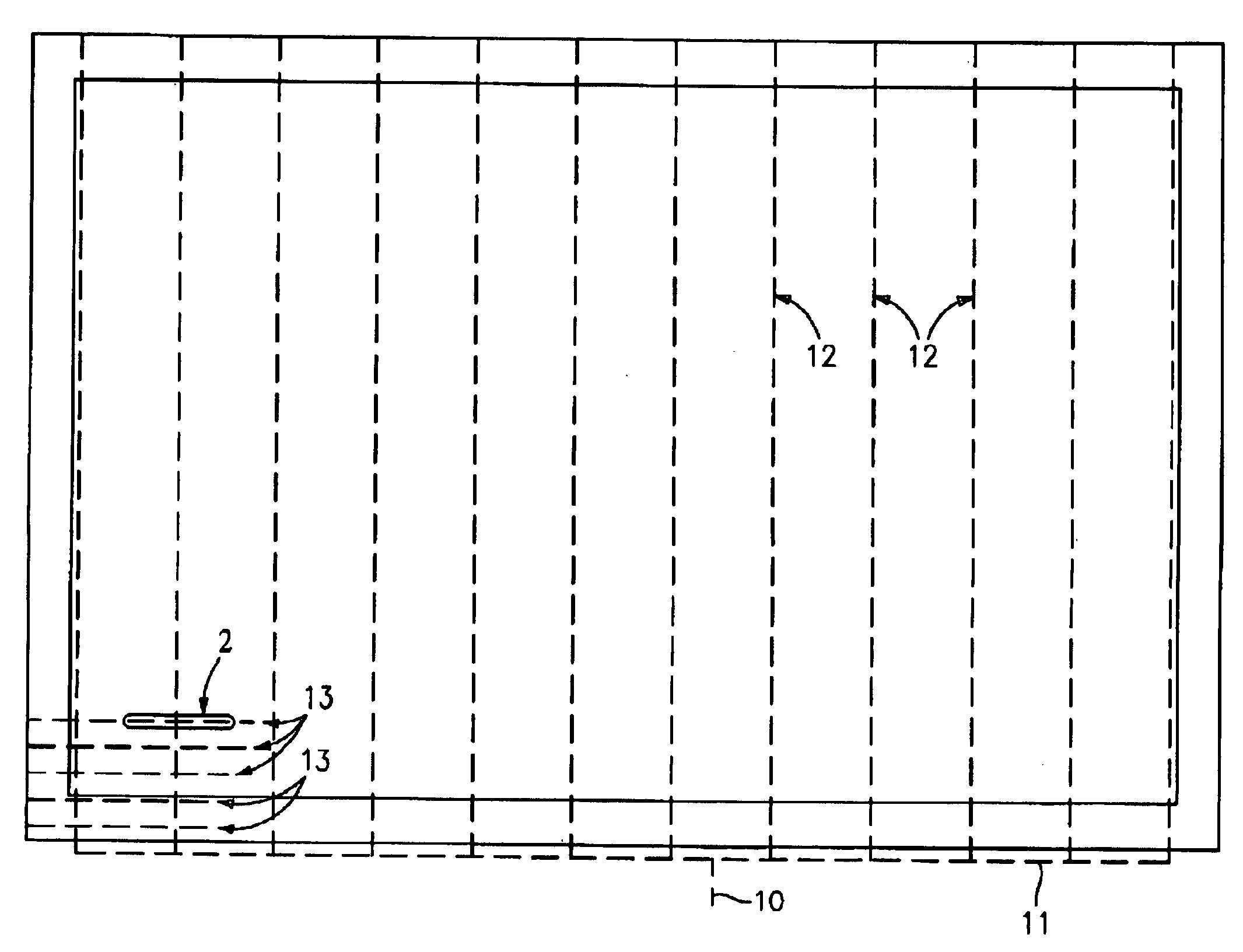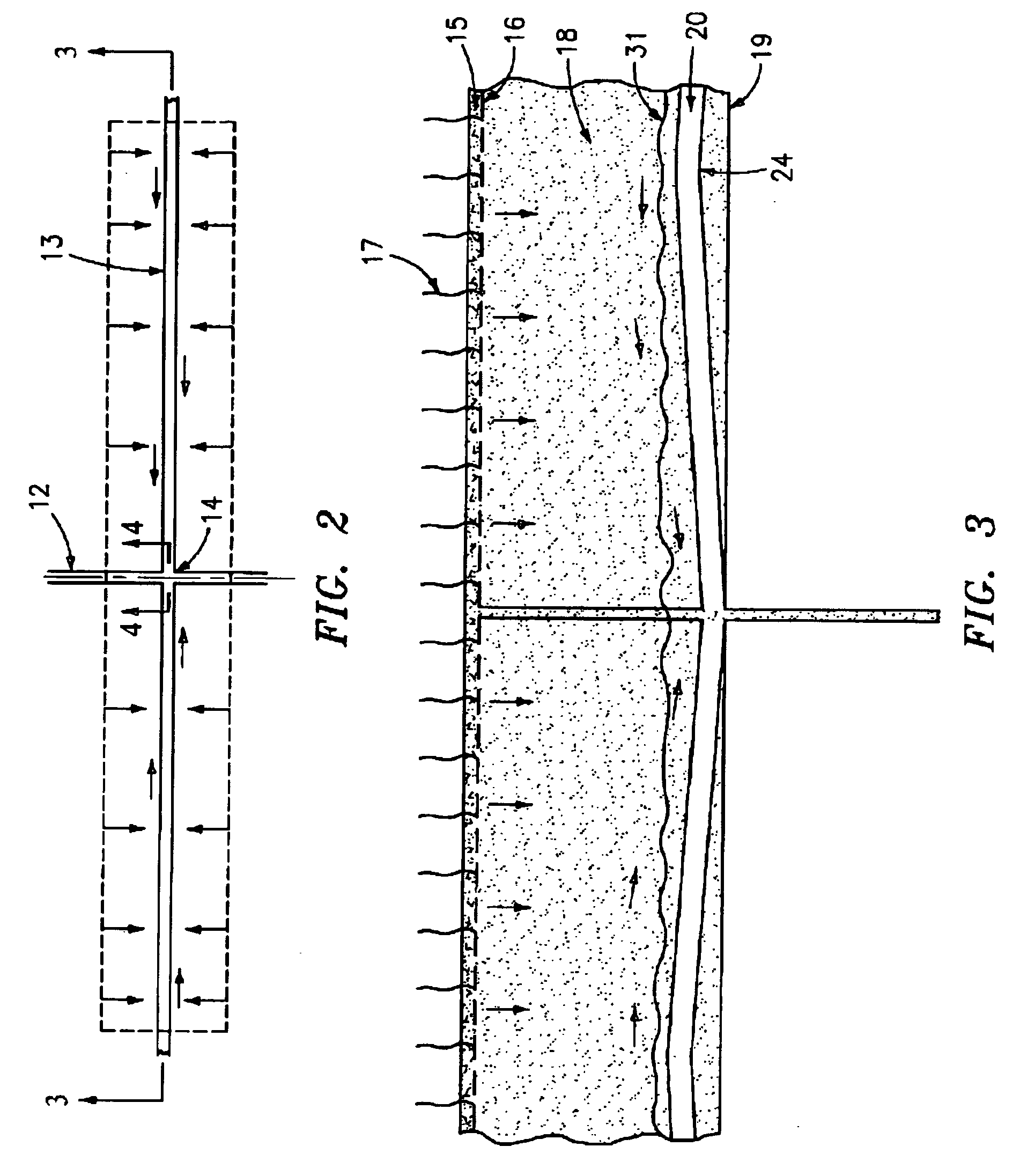System for draining and irrigating athletic fields
- Summary
- Abstract
- Description
- Claims
- Application Information
AI Technical Summary
Benefits of technology
Problems solved by technology
Method used
Image
Examples
Embodiment Construction
[0034] The following description of a typical system for a 390 by 240 ft. soccer field uses exemplary dimensions so that a typical configuration can be readily visualized. Naturally those skilled in the art can vary these numbers over wide ranges depending upon the application, while still making use of the primary features of the invention.
[0035]FIG. 1 shows an exit 10, typically a pipe or ditch, to conduct drainage water off site. It receives discharge from collector 11, also typically a pipe or ditch. Collector 11 receives discharge in turn from 12 horizontal trenches 12 in a lower layer. The trenches are 240 ft. long and spaced 32.5 ft. apart, 3 of which are labeled as examples. There are 30 horizontal slots 13 in an upper layer, only 5 of which are partially shown and labeled to avoid clutter in the figure. The slots are 390 ft. long, and are spaced 8 ft. apart. They intersect the trenches at an angle, in this case 90 degrees, and water can drain from the slots into the trench...
PUM
 Login to View More
Login to View More Abstract
Description
Claims
Application Information
 Login to View More
Login to View More - R&D
- Intellectual Property
- Life Sciences
- Materials
- Tech Scout
- Unparalleled Data Quality
- Higher Quality Content
- 60% Fewer Hallucinations
Browse by: Latest US Patents, China's latest patents, Technical Efficacy Thesaurus, Application Domain, Technology Topic, Popular Technical Reports.
© 2025 PatSnap. All rights reserved.Legal|Privacy policy|Modern Slavery Act Transparency Statement|Sitemap|About US| Contact US: help@patsnap.com



